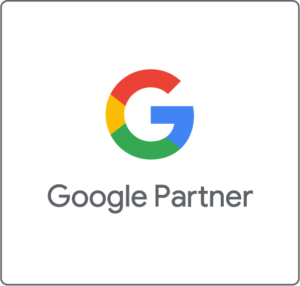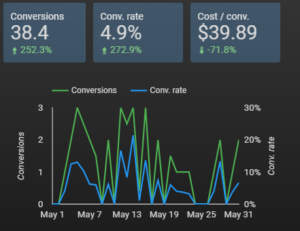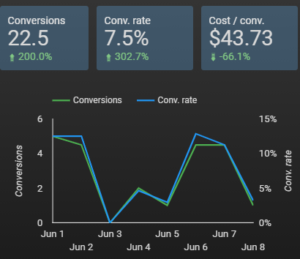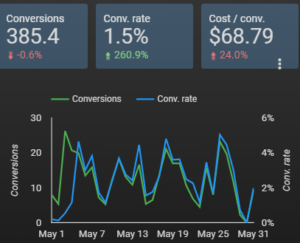In an era where digital visibility is paramount, Google Ads serves as a pivotal tool for advertisers aiming to capture the right audience. However, a common hurdle that many face, from seasoned marketers to DIY enthusiasts, is managing and reducing the cost per conversion. At McCord Web Services, we understand this challenge intimately and have developed strategies to help you get the most out of your Google Ads campaigns without breaking the bank.
Utilize Google’s Machine Learning for Bidding

One of the most effective strategies to lower your cost per conversion revolves around leveraging Google Ads’ advanced bidding algorithms. Powered by machine learning, these algorithms can optimize your bids in real-time, targeting users who are most likely to convert based on historical data and user behavior.
By setting a target cost per acquisition (CPA) or return on ad spend (ROAS), you’re essentially telling Google your desired outcome, allowing the system to adjust your bids to meet these objectives. This method ensures that your budget is spent efficiently, focusing on leads that are more likely to result in conversions.
The Power of Negative Keywords
Another crucial element in enhancing the efficacy of your Google Ads campaigns and reducing unnecessary expenditure is the judicious use of negative keywords. Negative keywords help refine your ad targeting by excluding search terms that aren’t relevant to your products or services, preventing your ads from being shown to uninterested users.
This targeting refinement means you’re not wasting money on clicks that aren’t going to convert, ultimately lowering your cost per conversion. Regularly review search term reports to identify irrelevant terms that trigger your ads and add them as negative keywords across your campaigns.
Broad Match Keywords with Caution
Broad match keywords can be a double-edged sword. While they increase your ad’s visibility by showing your ad on a wide range of user queries related to your keyword, they can also lead to irrelevant traffic, if not used judiciously. The key is to balance broad match keywords with a robust list of negative keywords to sculpt your audience effectively. This approach ensures that you’re casting a wide net but still catching the right kind of traffic that’s more likely to convert.
In conclusion, managing your Google Ads cost per conversion effectively involves a strategic blend of leveraging Google’s AI-powered bidding algorithms, refining your targeting with negative keywords, and careful use of broad match keywords. By focusing on these areas, advertisers and DIY marketers can optimize their campaigns for better conversion rates and lower costs. Remember, success in Google Ads doesn’t just come from big budgets but from smarter, data-driven decisions.






